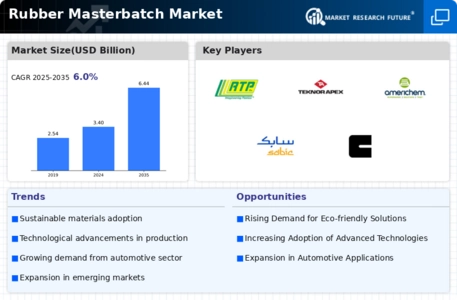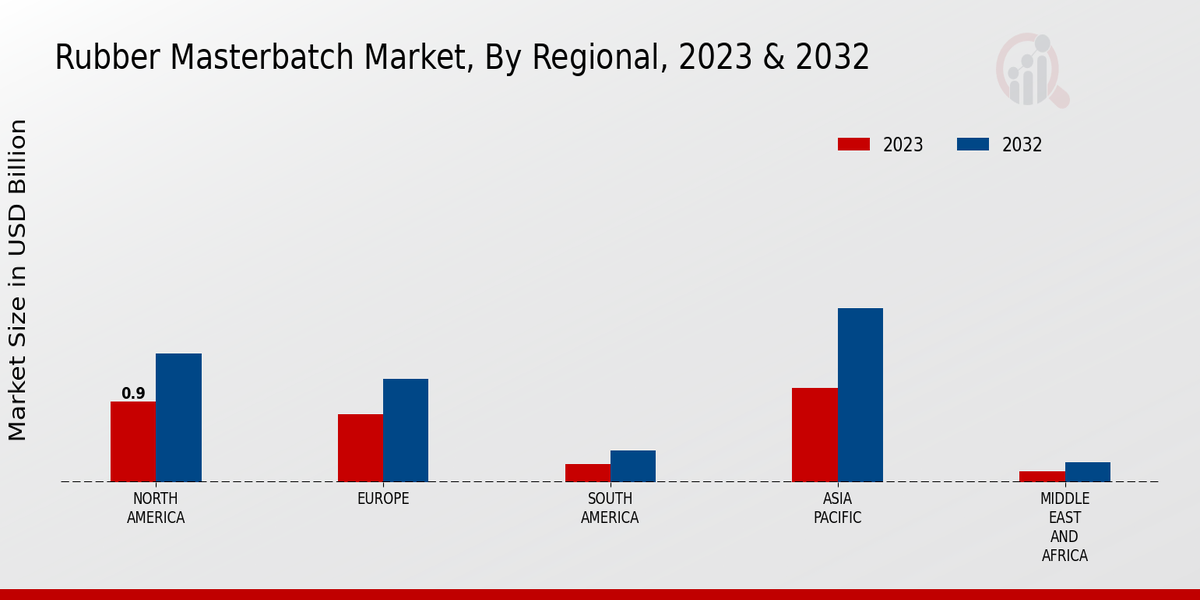Rubber Masterbatch Market Summary
The Global Rubber Masterbatch Market is projected to grow from 3.40 USD Billion in 2024 to 6.44 USD Billion by 2035, reflecting a robust growth trajectory.
Key Market Trends & Highlights
Rubber Masterbatch Key Trends and Highlights
- The market is expected to witness a compound annual growth rate (CAGR) of 5.99 percent from 2025 to 2035.
- By 2035, the market valuation is anticipated to reach 6.44 USD Billion, indicating substantial growth potential.
- in 2024, the market is valued at 3.40 USD Billion, laying a strong foundation for future expansion.
- Growing adoption of advanced manufacturing processes due to increasing demand for high-performance materials is a major market driver.
Market Size & Forecast
| 2024 Market Size | 3.40 (USD Billion) |
| 2035 Market Size | 6.44 (USD Billion) |
| CAGR (2025-2035) | 5.97% |
Major Players
Cabot Corporation, Ampacet Corporation, RTP Company, LyondellBasell Industries, PolyOne Corporation, Teknor Apex Company, Baerlocher, Gabriel Performance Products, Tosaf, Americhem, Techmer PMS, SABIC, Ferro Corporation, Clariant
















